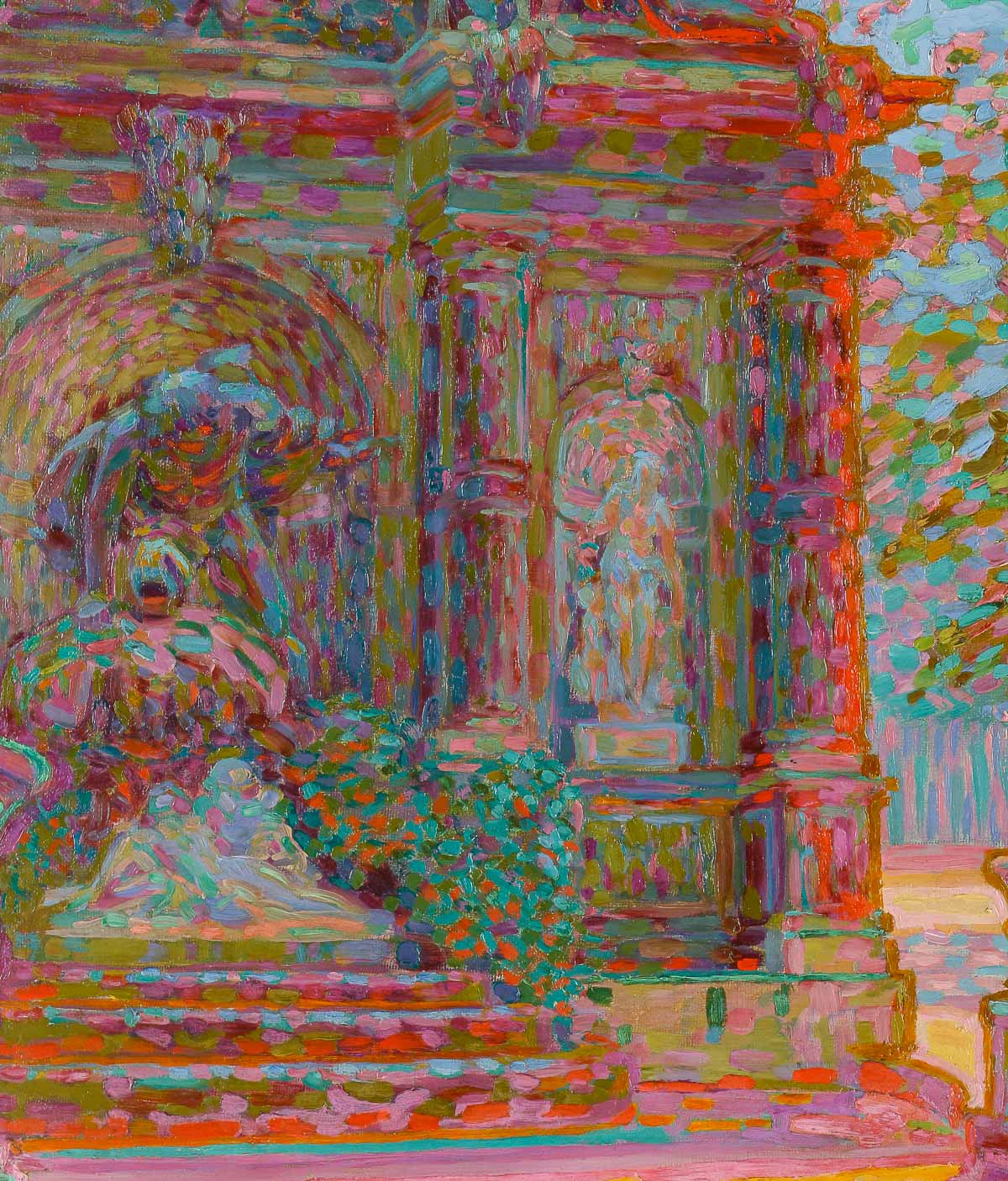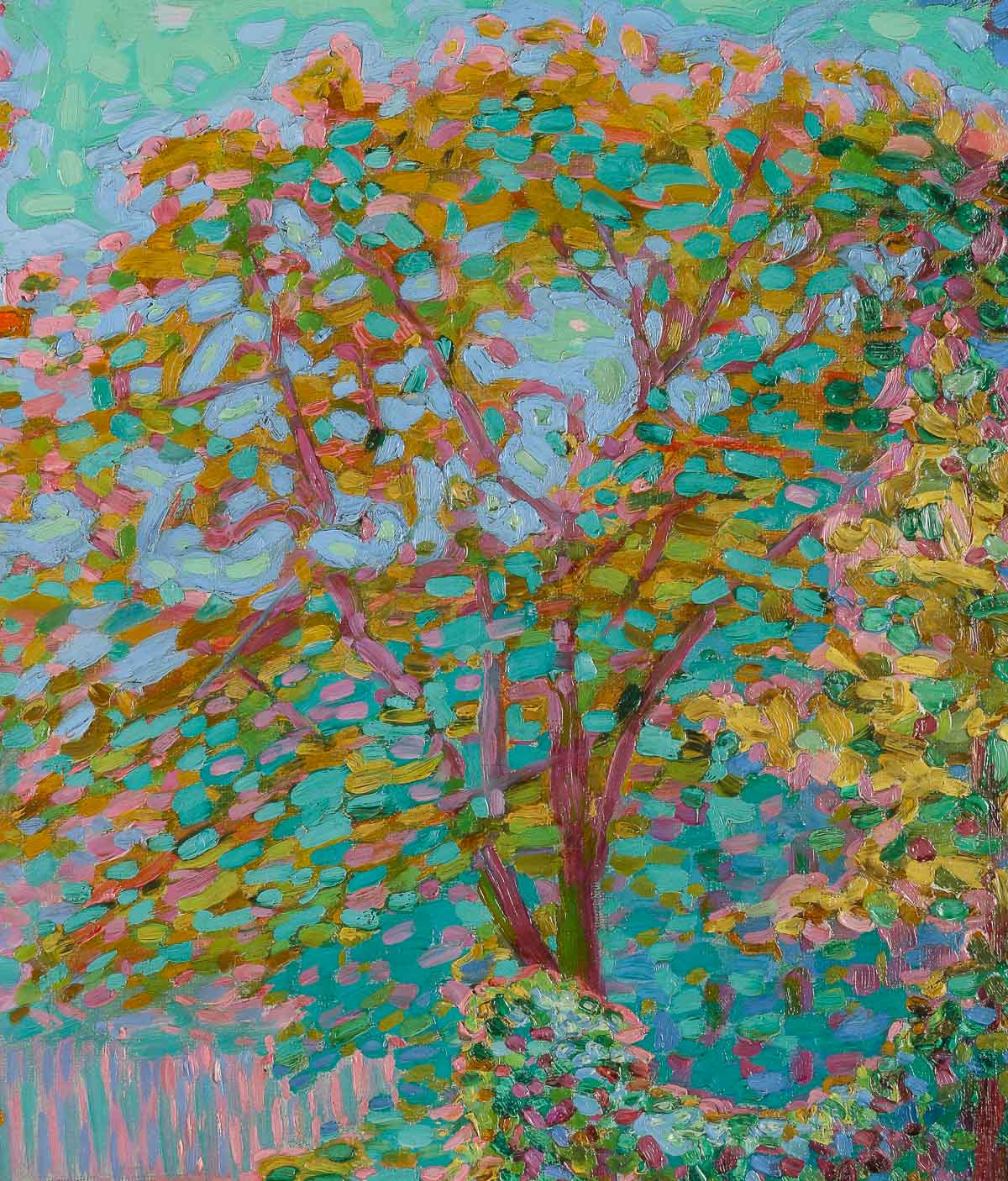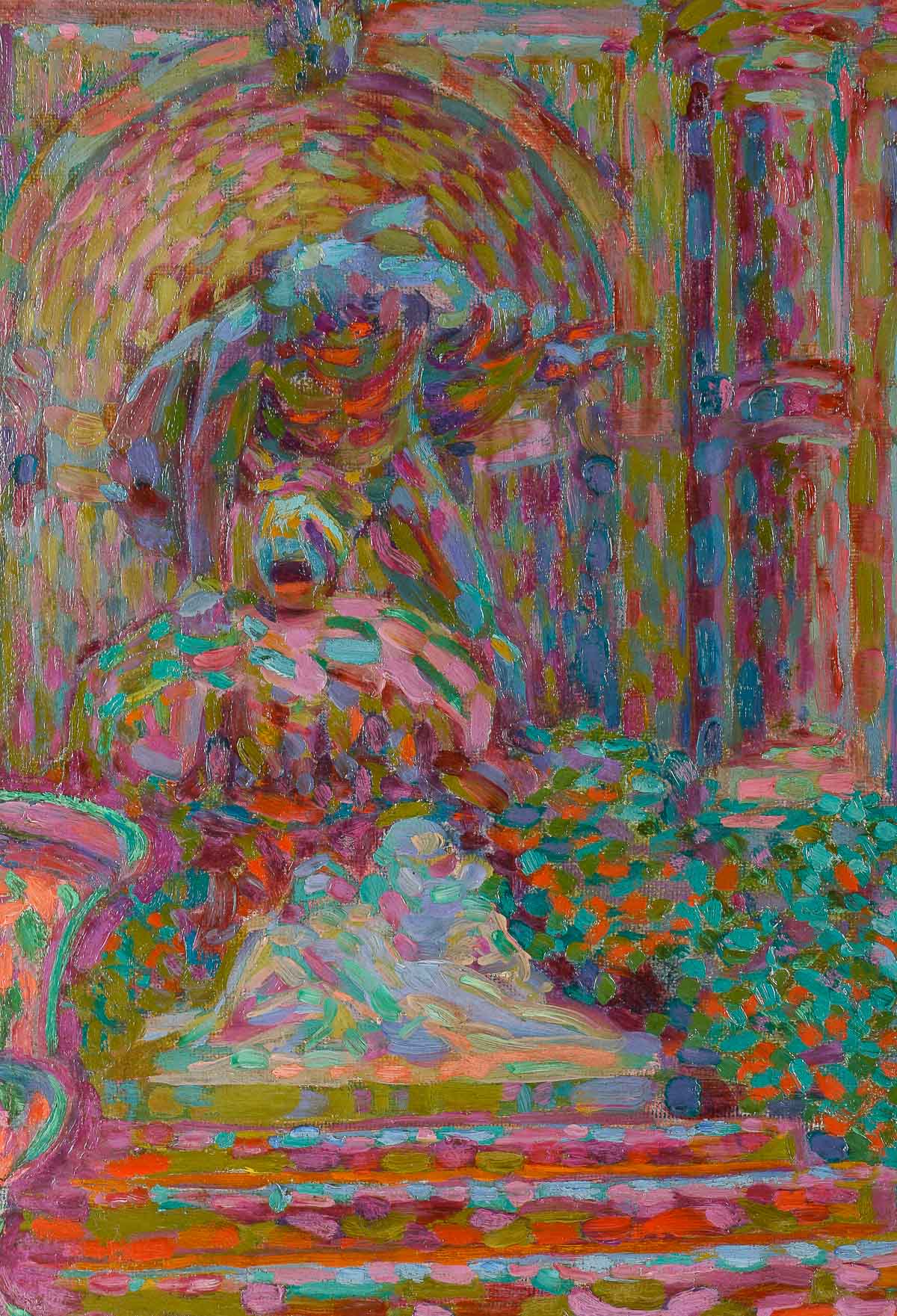Henri Doucet
A work by colorist painter Henri Doucet from 1906-1907, depicting the Fontaine Médicis in the Jardin du Luxembourg in Paris. A canvas of flamboyant colors blending Fauvism and Pointillism.
Oil on canvas
Dimensions: 70 x 60 cm
Price: 23 000 Euros
A 1906-1907 masterpiece by Henri Doucet with a pointillist touch.
It was during this same period, between 1906 and 1907, that his name appeared on the annual Salons registers.
He returned from his trip to Saint Tropez, during which he had been able to appreciate and gain experience with Signac’s pointillism, which he would apply in this painting of “Le jardin du Luxembourg”.
Henri Doucet, a talented colorist. A work of flamboyant, tawny color.
Henri Doucet has focused on light topics.
What better place to explore light variations than the Luxembourg Garden!
He incorporated the vivid colors of the Fauves into his palette, having discovered the 1905 Salon d’Automne exhibition at which Henri Matisse and André Derain imposed their new aesthetic vision.
Here, he delivers a canvas of exacerbated luminosity.
Biography
Henri Doucet was born into a family of workers and farmers in Pleumartin in 1883.
Noted for his talent as a painter, he studied under Professor M. Mourgeon at Châtellerault.
Henri Doucet moves to Paris and works on decorating the pavilions for the 1900 Universal Exhibition.
Living on the rue de Buci, he drew from antiques in the galleries of the École des Beaux-Arts and decided to devote himself to the study of painting. Painter Jean-Léon Gérôme notices his talents and lets him work in his studio. He took the competitive entrance examination for the École des Beaux-Arts and came second, thanks to which the town of Châtellerault and the Vienne département awarded him a scholarship. He studied at the École des Beaux-arts until 1907.
In 1905, he spent some time in Saint-Tropez, where he met Paul Signac, who introduced him to the Neo-Impressionist technique. The same year, he embarked on a trip to Italy, visiting Milan, Rome, Venice, Padua, Florence, Siena and Naples.
Henri became a pupil of Gabriel Ferrier, then Jean-Paul Laurens, who taught him the art of large-scale compositions, and finally Henri Martin, with whom he worked on the decoration of the Capitole de Toulouse.
He frequented the art world of the Belle Époque. A multi-faceted artist, he tried his hand at different practices simultaneously: painting, sculpture, decorative arts, even taking an interest in theatrical costumes and decoration. His artistic production illustrates his curiosity and desire to develop a personal style.
His journey took him to Italy, then London and finally Villeneuve-lès-Avignon, where he met representatives of the avant-garde movements.
Caught up in the First World War, he died prematurely in a trench on the Eastern Front in 1915, aged just 32.
Scattered across Europe (Roubaix, Paris, Saint-Tropez, London, Copenhagen, Oslo…), his creations are held in numerous public and private collections. In France, Le Grand Atelier, Musée d’art et d’industrie de Châtellerault and Musée Sainte-Croix, Poitiers between them own some thirty works by this painter from Poitiers, whose fate was struck by lightning.
Exhibitions
– October-November 1908: Salon d’Automne, Paris
– December 1909 – June 1910: International Exhibition of Paintings, Sculpture, Prints and Drawings, Odessa, Vladimir Izdebsky Gallery
1911: XXII. Ausstellung der Berliner Secession, Berlin
– October-December 1912: Second Post-Impressionist Exhibition. British, French and Russian Artists, London, Grafton Galleries
– February 1913: Exhibition of paintings, Paris, Galerie Eugène Druet
– February-April 1913: Armory Show, New York; then Chicago
– October 1913 – January 1914: Post-Impressionist and Futurist Exhibition, London, Doré Gallery
– January 1914: The Grafton Group. Vanessa Bell, Roger Fry, Duncan Grant. Second Exhibition, London, Galleries of the Alpine Club
– May-June 1914: 46. výstava S.V.U. Manes v Praze, Prague, Kinsky Garden Pavilion
Posthumous recognition
In 1919, the Salon d’Automne presented the painter’s works for the exhibition of artists who died for their country. The Salon des Indépendants held a retrospective of the artist’s work in 1926. Then in 1948, Marc Sandoz, curator of the Poitiers museums, organized a retrospective. In 1975, Les Amis de l’Abbaye de Créteil organized an exhibition at the Archives du Val-de-Marne in tribute to Henri Doucet.
Bibliography
– René Édouard-Joseph, Dictionnaire biographique des artistes contemporains, tome 1, A-E, Art & Édition, 1930, p. 423
Dictionnaire des Petits Maitres de la peinture 1820-1920″ (Dictionary of the Little Masters of Painting 1820-1920) P.Cabanne G. Schurr
Museums
In France,
- Saint-Tropez, Annonciade Museum
- Poitiers
- Chatellerault
- Gray
Abroad
- London , Courtault Institute
- Copenhagen
Source
https://www.alienor.org/collections/personne/6726-doucet-henri
https://fr.wikipedia.org/wiki/Henri_Doucet






